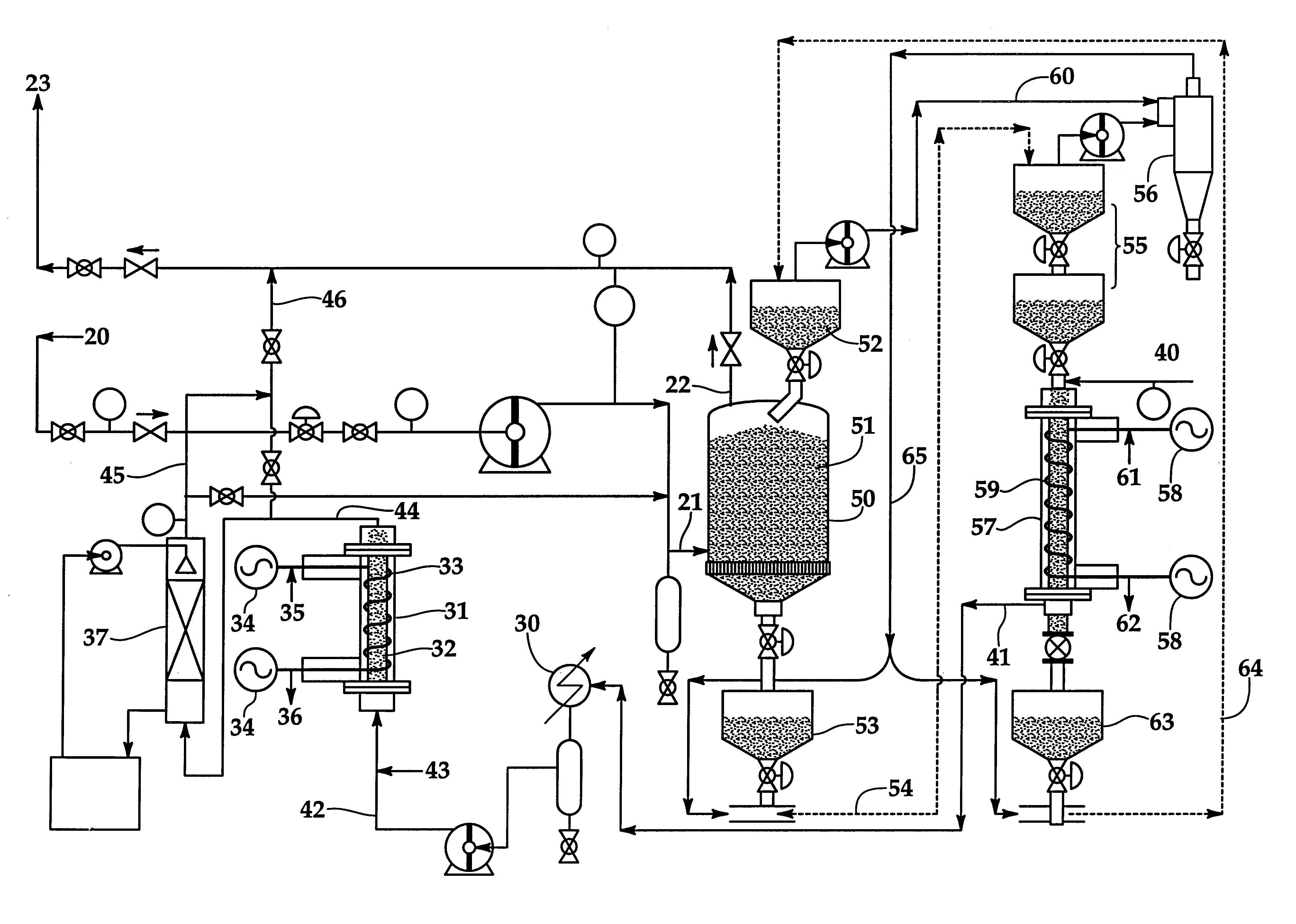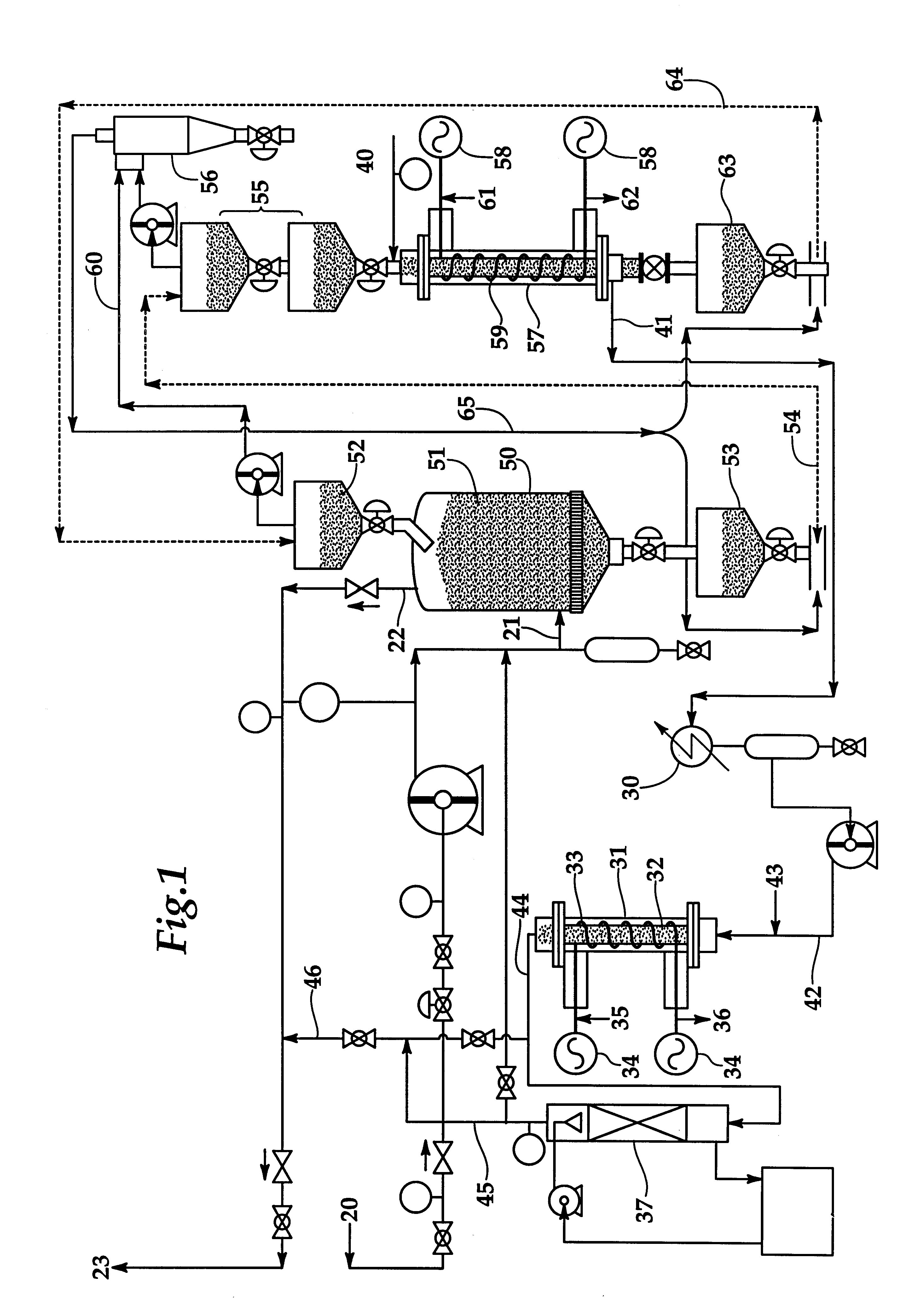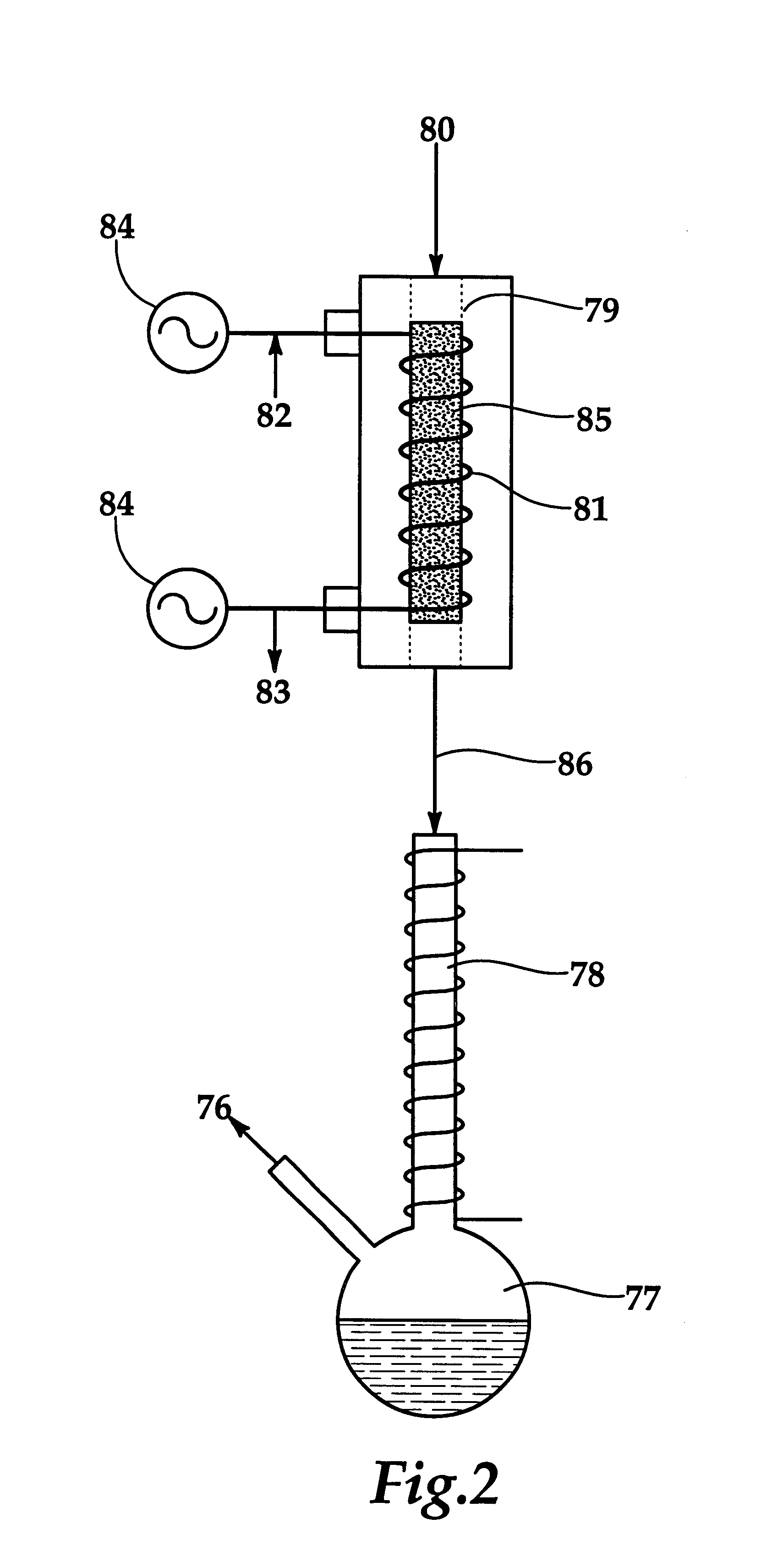Process for microwave air purification
a technology for air purification and microwave, applied in separation processes, physical/chemical process catalysts, dispersed particle separation, etc., can solve problems such as inability to releas
- Summary
- Abstract
- Description
- Claims
- Application Information
AI Technical Summary
Benefits of technology
Problems solved by technology
Method used
Image
Examples
example 1
To study the stability of carbonaceous material under continuing adsorption and desorption cycles, activated carbon was exposed to twenty such cycles. The apparatus of FIG. 2 was employed with a VOC of 200 ppm trichloroethylene. Nitrogen at 50 SCFH was the bleed gas. The microwave energy employed was 850 watts. By the fourth cycle the adsorption capacity had settled down into a substantially constant value appropriate to the accuracy of the measurements of 40 grams trichloroethylene per 100 grams of activated carbon. Thus recycling between many adsorption and desorption cycles does not substantially degrade the activated carbon bed.
example 2
The oxidation catalyst apparatus, as shown in FIG. 1, was utilized in an experimental setup to determine the efficiency of the oxidation step. Conventional platinum or palladium oxidation catalysts, such as PRO-VOC-7 manufactured by Protech Company, or equivalent, was utilized on an alumina substrate impregnated with approximately one-fourth by weight fine silicon carbon particles. The input air stream contained a solvent composed of an equimolar mixture of toluene, o-xylene, and trichloroethylene. The microwave power was 850 watts. With a six inch deep oxidation catalyst bed and a gas flow rate of 130 SCFH, solvent flow rates of from 30 to 70 mL / min produced substantially 100 percent destruction efficiency.
A process for microwave air purification with nonhazardous releases comprising adsorbing impurities, such as hazardous materials like organics, from said air with an unsaturated bed of carbonaceous material, being selected from the group consisting of activated carbon, char, soot...
PUM
| Property | Measurement | Unit |
|---|---|---|
| frequencies | aaaaa | aaaaa |
| frequency | aaaaa | aaaaa |
| frequency | aaaaa | aaaaa |
Abstract
Description
Claims
Application Information
 Login to View More
Login to View More - R&D
- Intellectual Property
- Life Sciences
- Materials
- Tech Scout
- Unparalleled Data Quality
- Higher Quality Content
- 60% Fewer Hallucinations
Browse by: Latest US Patents, China's latest patents, Technical Efficacy Thesaurus, Application Domain, Technology Topic, Popular Technical Reports.
© 2025 PatSnap. All rights reserved.Legal|Privacy policy|Modern Slavery Act Transparency Statement|Sitemap|About US| Contact US: help@patsnap.com



